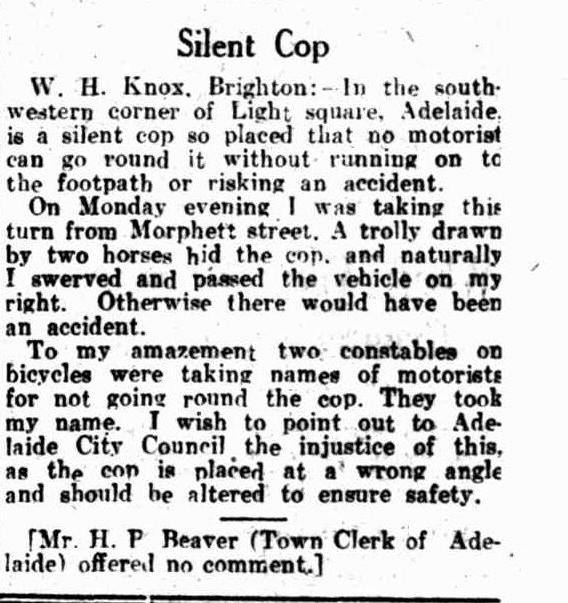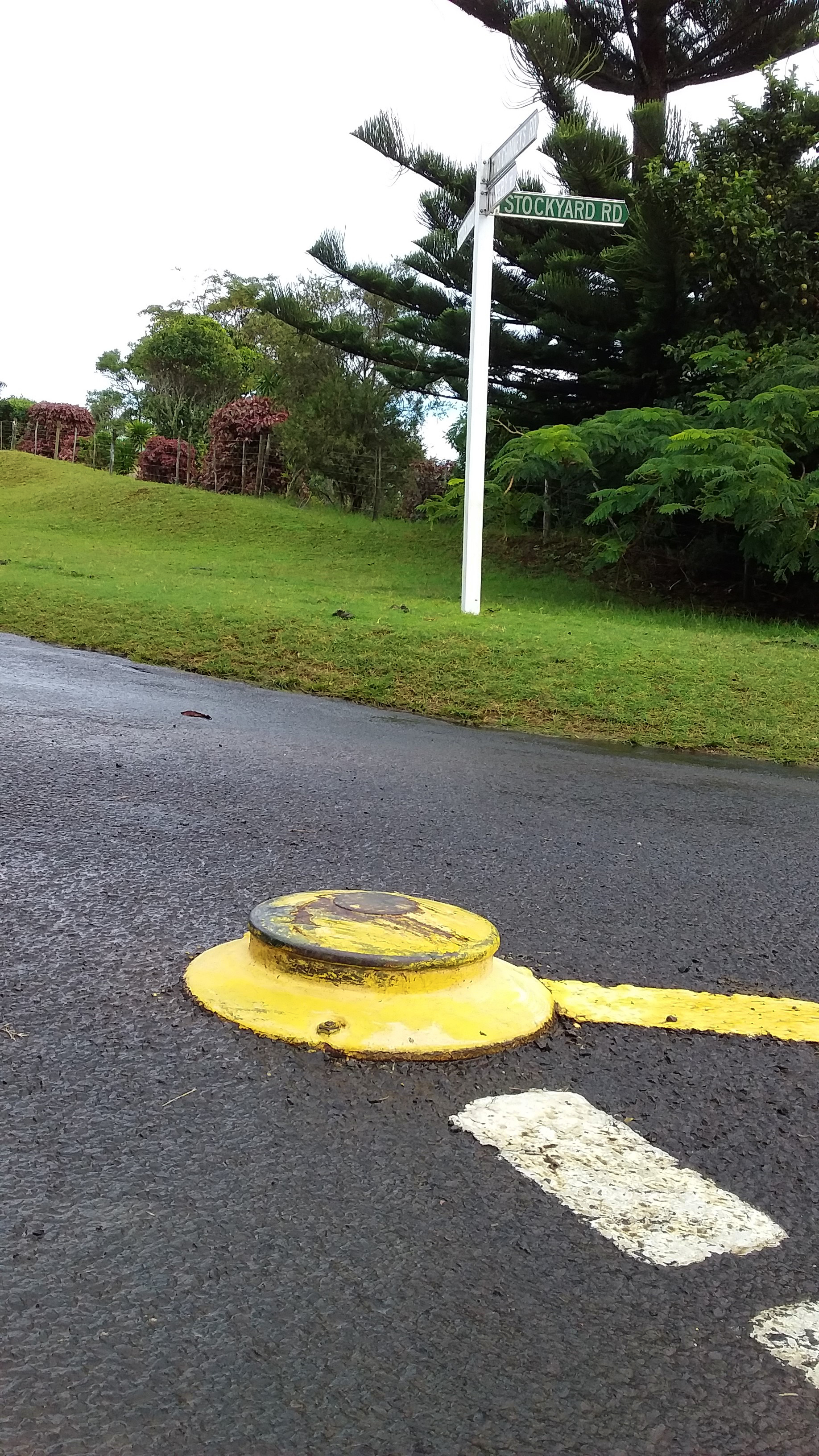Guardian of the silent cop
Photographs by Susan Prior. Above, a Norfolk Island silent cop
Norfolk Island, unwittingly perhaps, is probably the last bastion of the small but defiant concrete or metal yellow domes installed at road intersections known colloquially as silent cops. In Norfolk Island’s case, these remain exclusively at T-intersections, although maybe in the past there was one at the crossroads in Burnt Pine or elsewhere. Someone will remember.
All around Australia, these devices have been winkled out, a relic from a quieter and slower past. Today, more often than not, they can be found for sale on websites for collectables, presumably to be purchased and placed on display in the nation’s man caves.
Intersection of Cascade and New Cascade Roads
I work as a writer and an editor, and one of the tools I often use when editing books is the Ngram Viewer. This handy gizmo allows me to plug in a word and discover when it first came into common use, or conversely when it lapsed from use, which is exactly what I did with the term ‘silent cop’. Words come in and out of fashion and change their meanings all the time. If an author has text set in the 1850s and they use a word that I believe didn’t come into common usage until, for example, the 1920s, I can suggest a more suitable alternative to them.
But I digress.
According to Ngram Viewer, the term ‘silent policeman’ first appeared in written works in about 1905, ‘silent cop’ a little later in 1919. Neither are to be confused with a sleeping policeman (or cop), which is a speed bump across the whole or part of a road. Silent cops replaced the real flesh-and-blood variety, who would have stood in the middle of intersections directing traffic and making sure everyone obeyed the rules and stayed on the correct side of the road.
Some readers may have heard of the world-wide tech-phenomenon called Geocaching, a modern-day version of hide and seek using handheld GPS devices. Participants find hidden caches and then log the coordinates of their finds onto a website. Back in 2013 on Geocacher, an enthusiast known as ‘Yurt’ began a thread to document all the silent cops in Australia. Therein Norfolk Island gets a mention. But since then many of these remaining relics have disappeared.
I have found five of these now quirky installations on the island, at the following intersections:
Captain Quintal Drive, New Farm Road and Headstone Road
Cascade and New Cascade Roads
Douglas Drive and Headstone Road
Mission and Mount Pitt Roads
Stockyard and Two Chimneys Roads.
In Australia and the United States, silent cops would often have a necklace of retro-reflective glass beads, or cats eyes. I didn’t find any evidence of these on the Norfolk versions, which is not to say that they didn’t have them in the past. When these were originally installed they would often sit inside a large painted white circle about 60 cm in diameter to make them stand out.
The old way of turning, above, and how it is done today, below
Over the years, roads became busier, traffic rules for turning changed (see the diagram at right) and cars sat lower to the road. Running over one can cause irreparable damage to a low-slung chassis. Silent cops became the bête noire of many drivers and were deemed to be a traffic hazard. Articles dating back as far as the 1960s heralded their demise.
Now, largely, they are gone. Apart from the examples here on Norfolk Island. Maybe we should think twice before allowing these to be dug up. A couple of them definitely need some TLC, but perhaps they are worth preserving as an example of the changing way that we use our roads. Norfolk Island is the perfect place to keep them on display.











